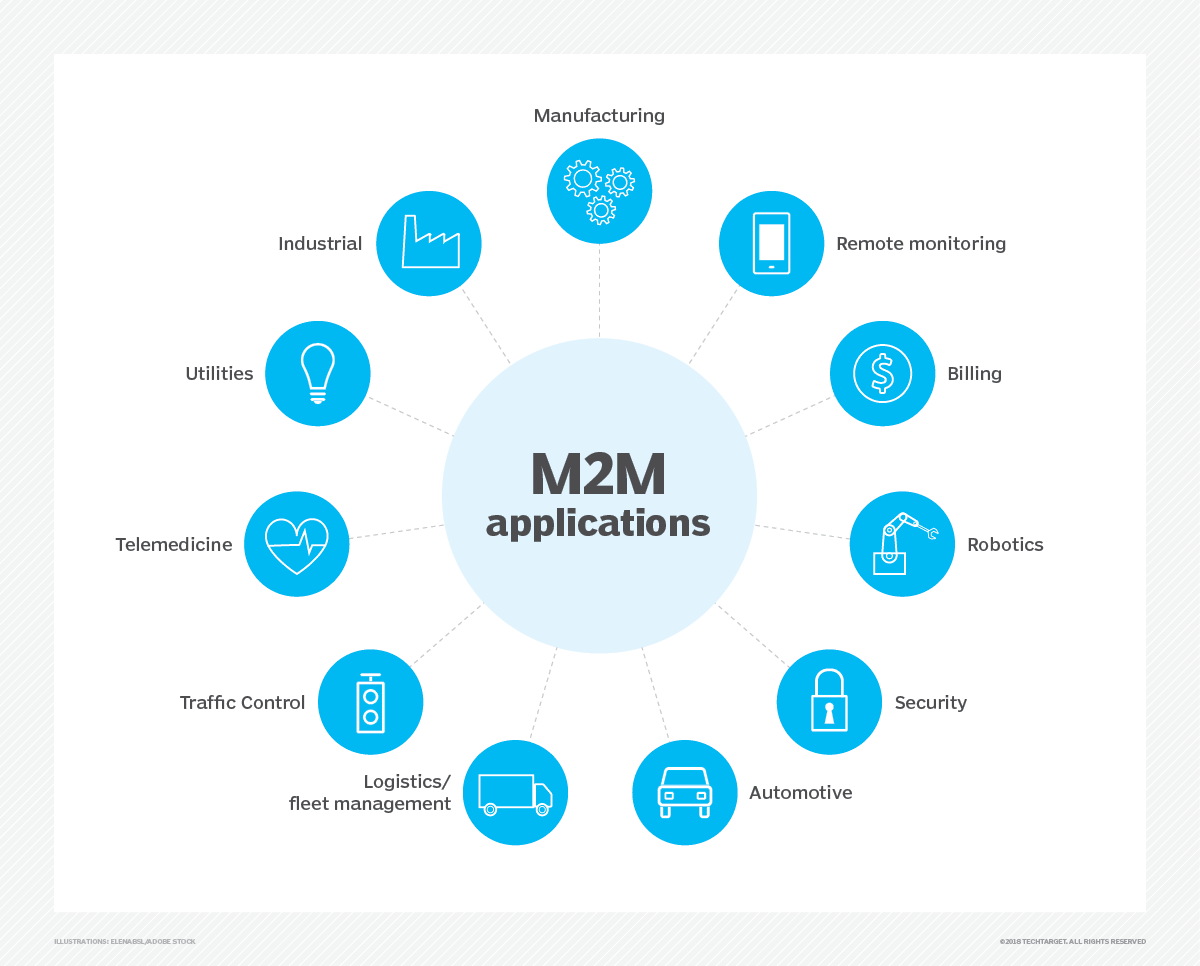Introduction
Machine-to-Machine (M2M) communication refers to direct communication between devices using any communications channel, including wired and wireless. It represents technology that enables networked devices to exchange information and perform actions without manual assistance.
Definition
• Also known as Machine Type Communication (MTC).
• Involves automated data transmission and measurement between mechanical or electronic devices
• Requires minimal or no human intervention
- 1. M2M is like giving machines their own way to "talk" to each other
- 2. They collect information through sensors and share it over networks

Key Characteristics
1. Low Mobility
– Devices are typically stationary or move within limited areas
– Movement patterns are predictable
2. Time Control
– Communications occur at predetermined intervals
– Data transfer can be scheduled and delayed if needed
3. Data Transmission
– Usually involves small data packets
– Packet-switched service
– Frequent but small data transfers
4. Power Management
– Low power consumption
– Designed for long-term operation
– Energy-efficient communication protocols
Applications of M2M
1. Security
• Surveillance systems
• Alarm systems
• Access control
• Vehicle security
2. Tracking & Tracing
• Fleet management
• Asset tracking
• Navigation systems
• Traffic monitoring
• Road tolling
3. Payment Systems
• Point of sale terminals
• Vending machines
• Gaming machines
• Automated payment systems
4. Healthcare
• Patient monitoring
• Remote diagnostics
• Telemedicine
• Elderly care support
5. Remote Maintenance
• Sensor monitoring
• Equipment control
• Elevator systems
• Diagnostic systems
6. Utility Metering
• Electricity meters
• Gas meters
• Water meters
• Smart grid systems
Architecture Components
1. M2M Device
• End-point devices that collect data
• Contains sensors or actuators
• Capable of replying to data requests
• Can transmit data autonomously
2. M2M Gateway
• Ensures interconnection between devices
• Manages device communication
• Provides interface to communication network
• Handles protocol conversion
3. M2M Area Network
• Local network connecting devices to gateway
• Examples: Bluetooth, ZigBee, WLAN
• Manages local device communication
4. Communication Networks
• Carries data between gateways and applications
• Examples: LTE, WiMAX, xDSL
• Provides wide-area connectivity
5. M2M Applications
• Process and analyze data
• Provide user interface
• Implement business logic
• Generate reports and alerts
Requirements for M2M Systems
Technical Requirements
1. Scalability
– Must handle large numbers of devices
– Flexible network capacity
– Efficient resource management
2. Security
– Device authentication
– Data encryption
– Access control
– Integrity checking
3. Reliability
– Continuous connectivity
– Error recovery
– Message delivery confirmation
– Failure notification
Functional Requirements
1. Message Delivery
– Support for sleeping devices
– Multiple delivery modes
– Message scheduling
– Priority handling
2. Communication Management
– Path selection
– Failure notification
– Load balancing
– Traffic optimization
3. Device Management
– Remote configuration
– Software updates
– Performance monitoring
– Fault management
Challenges and Issues
1. Security Concerns
• Physical device security
• Data protection
• Network security
• Authentication methods
2. Addressing Issues
• Device identification
• Address management
• Naming schemes
• Resource allocation
3. Standardization
• Multiple competing standards
• Integration challenges
• Protocol compatibility
• Industry adoption
4. Device Management
• Remote maintenance
• Update management
• Configuration control
• Resource monitoring
Future Scope
1. Integration with AI and Machine Learning
2. Enhanced automation capabilities
3. Improved security measures
4. Better standardization
5. Increased adoption in various industries